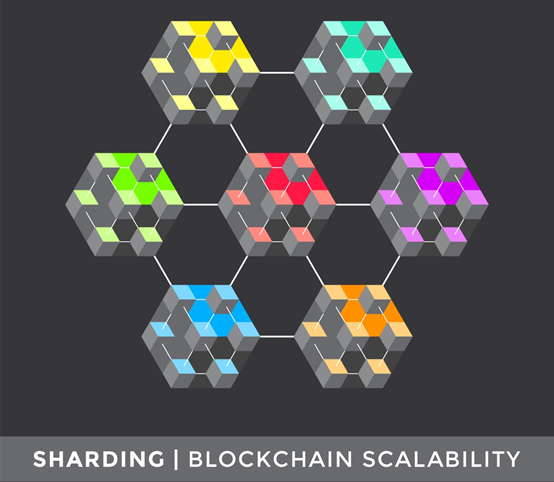What is sharding?
Sharding is a method of breaking up a database, network, or blockchain into smaller parts. Sharding is sometimes referred to as horizontal partitioning. It helps improve database performance and reduce query response time. Sharding is not new to database management. It has been used since the evolution of centralised databases. Sharding is possible based on data characters like breaking customer database on geography, types, revenue, etc. Sharded groups are placed on different servers.
Summary
- Sharding is a method of breaking up a database, network, or blockchain into smaller manageable parts.
- In cryptocurrency, blockchain sharding mainly helps to resolve the problem of scalability.
- Ethereum is one crypto network that uses sharding.
Frequently Asked Questions (FAQ)-
Why does crypto blockchain use sharding?
Crypto blockchains use sharding to overcome scalability problems. It, therefore, improves the efficiency of the blockchain. Crypto blockchains have various nodes. New pieces of data are added to the ledger only when all nodes are placed in agreement. Thus, it ensures that all stored data on the blockchain is secure.
However, it becomes an issue during broader adoption as more nodes get added to the system. Sharding groups these nodes on the blockchain grid. Each shard stores specific types of data based on distinguishing characteristics.
Cryptocurrency blockchains can also create shards for digital tokens, smart contracts, etc. The only necessity when creating blockchain shards is communication possibility between shards. This enables accessibility for any node across the entire blockchain. Sharding thus ensures better participation across the network, and ethereum uses sharding on its Ethereum network.

Image Source: © Al4k14 | Megapixl.com
What are other types of sharding?
Sharding can be of the following types-
- Network sharding is the most popular one, with blockchain networks getting divided into smaller parts or subnetworks. Each subnetwork thus becomes a shard. All shards can run parallel on the network.
- Transaction sharding classification based upon characteristics of transactions. It helps in quicker authentication and processing. Features need to be mapped with the created shards.
- Computational Sharding is based on the type of computational execution. It improves overall performance efficiency.
- State Sharding creates multiple parts of the entire ledger of transactions on a network. Each shard is processed individually but remains interactive.
Sharding can thus be based on computational or storage requirements or for any other specific need.
What are the benefits of sharding?
A major benefit of Sharding is that it assists in horizontal scaling, which means adding more machines to an existing network. Horizontal scaling is often done to allow for more traffic or increase processing speed. On the other hand, vertical scaling involves upgrading existing server or hardware capabilities by optimising processing power.
Both horizontal and vertical scaling increases the flexibility of a network. It even improves the query time on a database. With sharded databases, queries have been searched over fewer rows and columns, and the result is obtained quickly.
Sharding also makes database or networked applications more reliable. Outage problems get resolved, and even if they occur may affect just one shard. Thus, only one part of the database or network gets affected and not the entire setup.
Sharding is becoming popular with cryptocurrency expansions. Crypto blockchain networks can benefit a lot from sharding as more users get added. Sharding allows increased load handling. Even the storage and processing capacity of the chain is improved.
When blockchain nodes are fragmented from sharding they are responsible only for that work segment.

Source: © Michalsuszycki | Megapixl.com
Each node thus does not need to maintain the entire network transaction ledger. Transaction validation is possible without it. It, therefore, allows speedy processing on the network.
By providing these solutions, sharding makes blockchains and databases more sustainable for the long term.
What are the drawbacks of sharding?
Sharding has a lot of benefits for managing complex databases, massive networks, and even blockchains. On the flip side, it also has a few disadvantages-
One major drawback in sharding implementation is the complexity involved. It is challenging to create a sharded architecture based on essential characteristics, especially in complex networks.
If not appropriately done, sharding can cause data corruption or even data loss. The implementation may also have an impact on the current workflow.
Shards can also turn out imbalanced. Since data is divided based on characteristics, eventually, one shard may become heavier than the other. As a result, traffic on one shard network may be more than the other. The heavier shard will thus have a higher risk from malicious attacks.
Once sharded is returning to unsharded architecture is difficult and time-consuming. Thus, the decision of sharding must be taken after careful contemplation. In addition, database backups must be implemented before sharding. It will only then become possible to rebuild the original database.
Some technologies may not support sharding at all. Thus, these systems may not benefit in terms of scalability and improved processing or accessibility that sharding offers.
It is also possible for hackers and attackers to launch Single-Shard Attacks. It will not require much computational power and is therefore easy. They may then harm or destroy one part of the network. Without a proper backup mechanism, this shard may get lost or become unrecoverable. Such single sharding failures can become a challenge for network decentralisation.
Can sharding problems be fixed?
Sharding issues can be fixed by using these standard methods-
Shards must be anticipated beforehand. It will help reduce time to implement this shard on networks that need to scale up quickly. Cryptocurrency blockchain can significantly benefit from this as new miners and traders get added every day.
Privacy management of shards needs to be planned and implemented carefully. In this way, independent shards will have enhanced protection from malicious attacks. In addition, it will ensure shards don’t fail on the network. In turn, this will ensure network resilience.
Backup tools need implementation beforehand. Even other resources needed with fast scaling operations need to be made available on time. It will reduce implementation time and ensure that system can go back to the original anytime. It will also help with horizontal and vertical expansions of the network.
 Please wait processing your request...
Please wait processing your request...